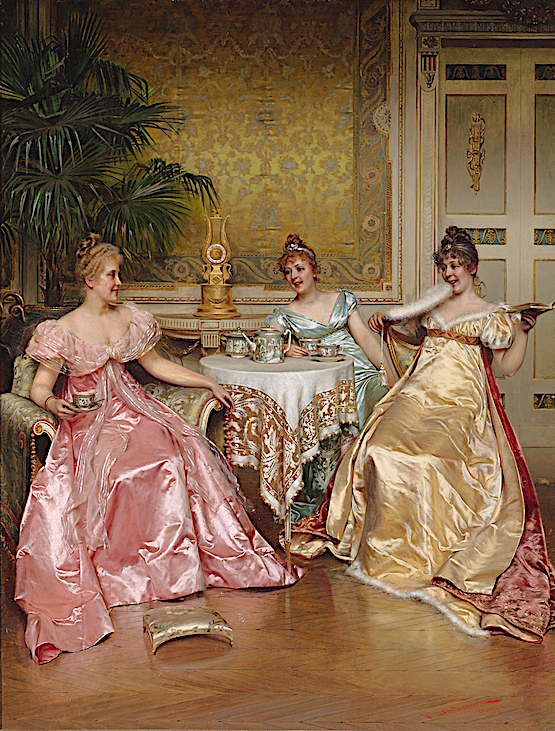IN THIS ISSUE
TEN THINGS THAT NEVER GET
OLD ABOUT A BISTRO
By John Mariani
NEW YORK CORNER
LOVE AND PIZZA
CHAPTER 44
By John Mariani
NOTES FROM THE WINE CELLAR
TENUTA DI ARCENO Q&A
By John Mariani
❖❖❖
On the next video episode of Celebrating Act 2 on January 27, I will be speaking with hosts John Coleman and Art Kirsch about the topic of "Do Corporate Restaurant Groups Offer Better Quality?"
OLD ABOUT A BISTRO
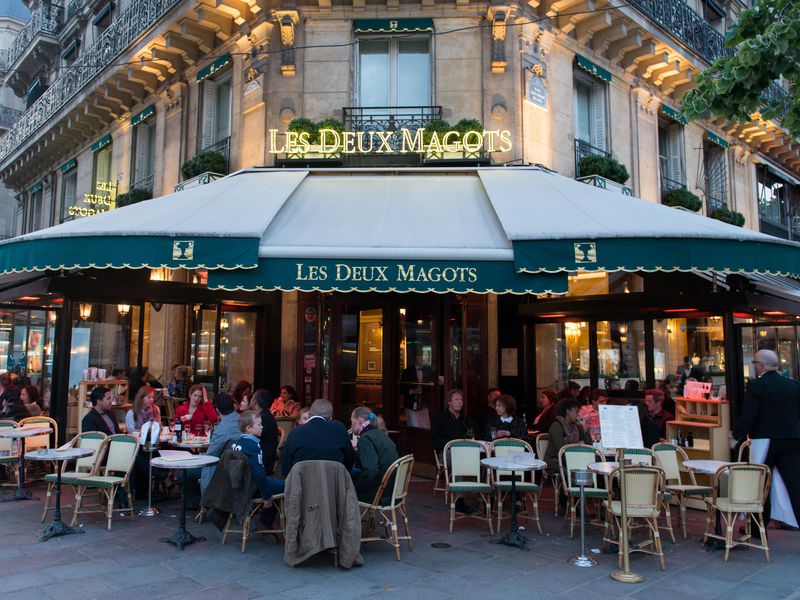
 “Fashion,”
said French couturier Coco Chanel (left),
“is made to go out of style,” and as I read
about how insects are the hot new menu item or
about a restaurant in Brooklyn where dinner is
held in total silence, I wag my head and
consider that, like pizzerias in Naples, pubs in
Dublin, and dumpling houses in Canton, the
traditional French bistro has never been out of
style, because, like work boots, they were never
deliberately stylish in the first place.
“Fashion,”
said French couturier Coco Chanel (left),
“is made to go out of style,” and as I read
about how insects are the hot new menu item or
about a restaurant in Brooklyn where dinner is
held in total silence, I wag my head and
consider that, like pizzerias in Naples, pubs in
Dublin, and dumpling houses in Canton, the
traditional French bistro has never been out of
style, because, like work boots, they were never
deliberately stylish in the first place.
I owe a great deal to the French bistro,
where I ate my first meal in Paris, alone in the
Gare du Nord at the age of nineteen. My high
school French allowed me to decipher little on a
menu listing suprêmes de volaille,
potage  Saint-Germain,
quenelles de brochet, and tripes à la
mode Caen, but I spotted blanquette de
veau (right), which sounded like a
homey veal dish.
Saint-Germain,
quenelles de brochet, and tripes à la
mode Caen, but I spotted blanquette de
veau (right), which sounded like a
homey veal dish.
When the pudgy,
black-jacketed, white-aproned waiter brought a
large ceramic casserole to my table and lifted the
lid, the steamy aroma of cream, veal and green
beans hit me with the force of tear gas, but the
tears were of joy, not pain. The
ingredients of the dish melded in such exquisitely
simple flavors that I realized I had never had
food this good.
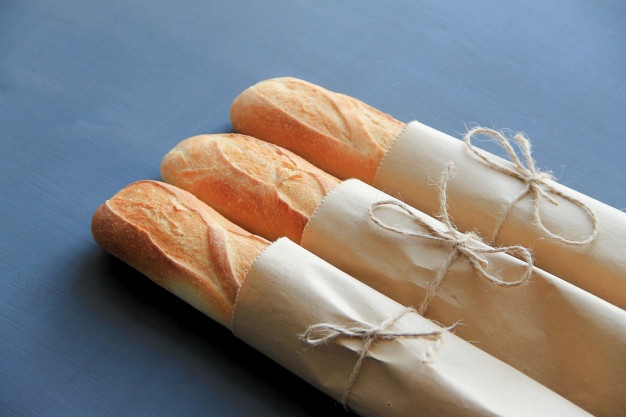 Accompanied
by a paper-wrapped baguette and a carafe of
Beaujolais, I experienced a true epiphany that,
without my knowing it then, would someday set me
off on a career writing about good food and wine.
Accompanied
by a paper-wrapped baguette and a carafe of
Beaujolais, I experienced a true epiphany that,
without my knowing it then, would someday set me
off on a career writing about good food and wine.
The pleasures of a French bistro—however
twisted the meaning of the word has become to
describe just about any small restaurant of any
stripe—have never waned, even if the term covers a
lot of non-bistro restaurants and the food has
nudged somewhat towards contemporary taste And
here’s why they’ll never get old.
1. Bistros
are
neighborhood restaurants, set on a corner or in a
cul-de-sac, not on grand boulevards or in malls. They are
family places—often mom-and-pop owned—where other
families dine on Sundays or special occasions, and
where the older aunts and uncles are assured they
will have their favorite dish made as it was years
and years ago.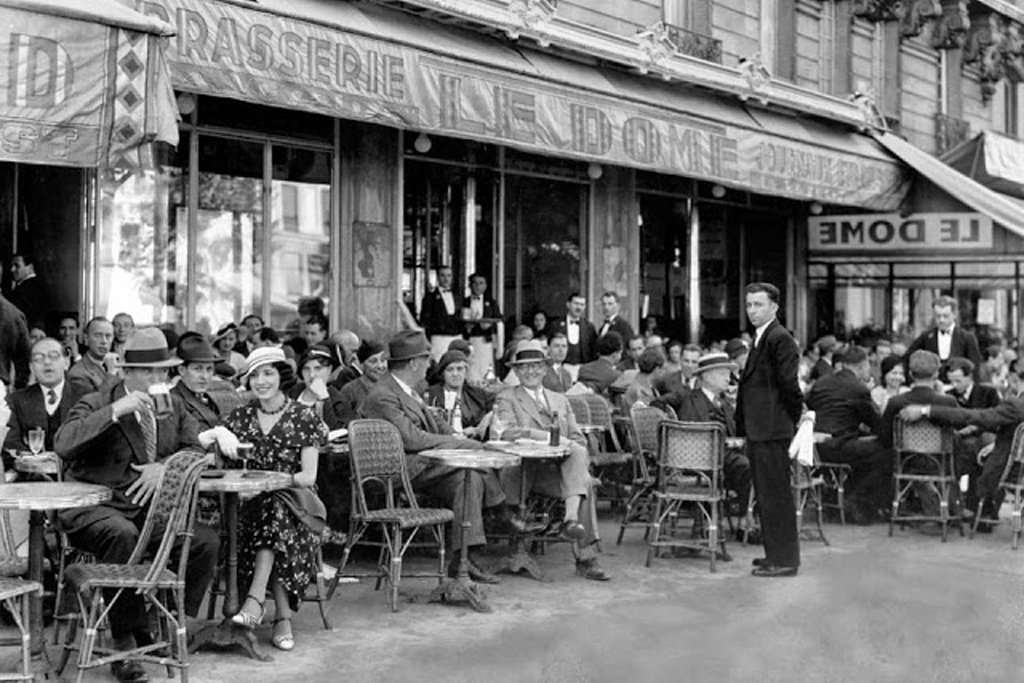
2. Bistros
are built for sheer comfort: Lace curtains hang in
the windows, the floors are of colored tiles,
copper pots hang on the walls, the tablecloths are
stiff, the chairs sturdy, the banquettes always
red or brown leather and the old mirrors are
slightly tilted to give everyone a better look at
everyone else.
There are newspapers for the solo diner to
read and catch up.
Always lively but never raucous, the
ambiance of a bistro is the epitome of bonhomie. Everyone
is happy for a little while.
3. Before
you even read the menu, there will be good crusty
bread and abundant butter on the table, along with
a pot of fresh flowers, or one single flower. A votive
candle will be lighted at night. You may be
offered a complimentary apéritif—a little white
Port perhaps, a finger of vermouth.
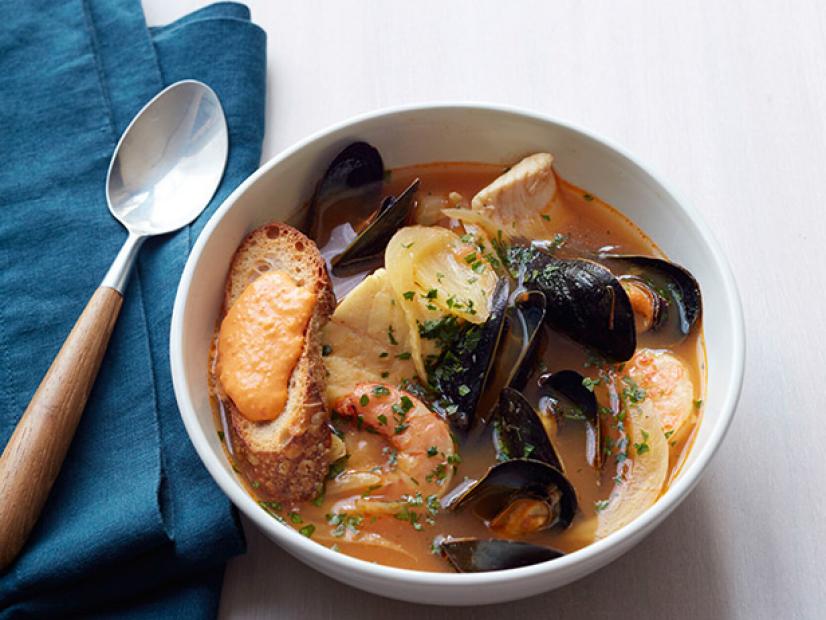 4. Bistros
are
fast paced, for, while there’s no reason you can’t
spend hours there over coffee and cognac, the
service is always brisk, the food starts coming
out moments after you order, the wine cork is
popped and the wine poured as you break off your
first morsel of bread; the check is delivered
within seconds of your asking for it, and the
staff’s thank-you’s and au revoirs are proffered
without feigned flourish.
4. Bistros
are
fast paced, for, while there’s no reason you can’t
spend hours there over coffee and cognac, the
service is always brisk, the food starts coming
out moments after you order, the wine cork is
popped and the wine poured as you break off your
first morsel of bread; the check is delivered
within seconds of your asking for it, and the
staff’s thank-you’s and au revoirs are proffered
without feigned flourish.
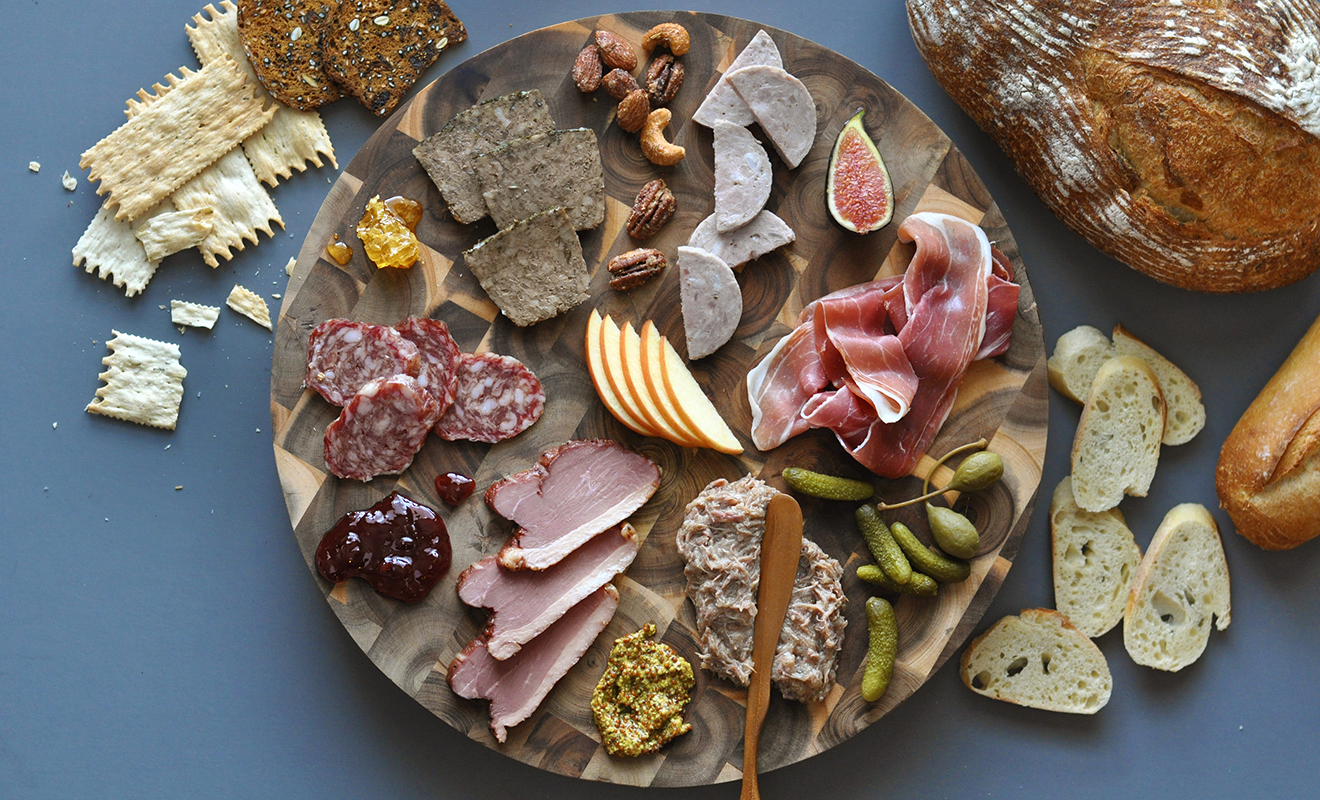 with
crème fraîche.
with
crème fraîche.
7. Bistros serve
plenty of offal, from calf’s liver (below)
to kidneys, brains to tongue, head cheese to tail,
and the fish is delivered to the back door fresh
from Rungis market, where it was unloaded in the
middle of the night with seafood from the
Mediterranean and North Atlantic.
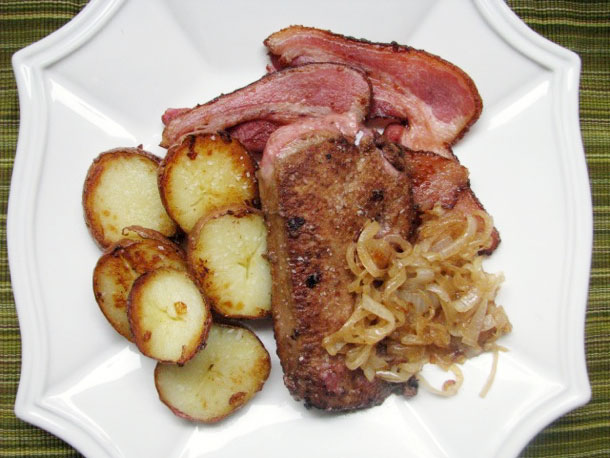
8. Bistro wine
lists are both dependable and modestly priced,
with a few rare bottles the owner keeps for
special guests. There will be plenty of vins de
Pays, regional wines from 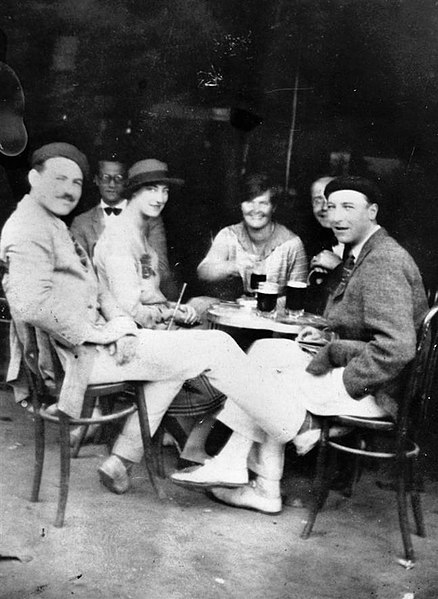 the Loire Valley and Provence, and
some will be offered by the carafe.
the Loire Valley and Provence, and
some will be offered by the carafe.
9.
Since bistros are neighborhood restaurants, most
do not dare charge exorbitantly, except Paris
tourist traps like L’Amis Louis, where the roast
chicken for two runs $130 and everyone eating
there is either American or Chinese.
❖❖❖
LOVE AND PIZZA
Since, for the time being, I am unable to write about or review New York City restaurants, I have decided instead to print a serialized version of my (unpublished) novel Love and Pizza, which takes place in New York and Italy and involves a young, beautiful Bronx woman named Nicola Santini from an Italian family impassioned about food. As the story goes on, Nicola, who is a student at Columbia University, struggles to maintain her roots while seeing a future that could lead her far from them—a future that involves a career and a love affair that would change her life forever. So, while New York’s restaurants remain closed, I will run a chapter of the Love and Pizza each week until the crisis is over. Afterwards I shall be offering the entire book digitally. I hope you like the idea and even more that you will love Nicola, her family and her friends. I’d love to know what you think. Contact me at loveandpizza123@gmail.com
—John Mariani
To read previous chapters go to archive (beginning with March 29, 2020, issue.
LOVE AND PIZZA
Cover Art By Galina Dargery
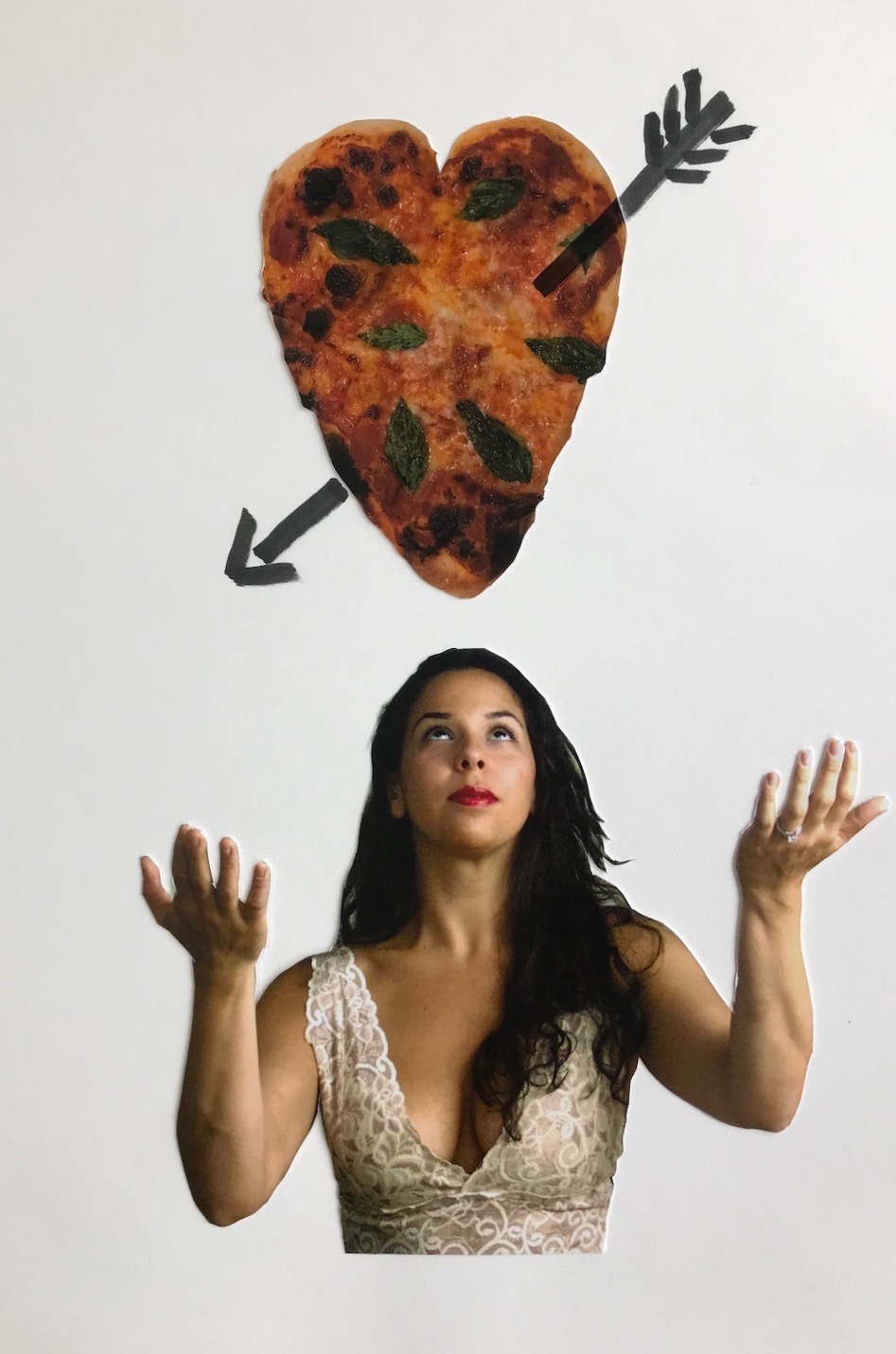

New York’s
weather both fascinated and astounded Marco di
Noè. On January 15 the temperature dropped to
eight degrees—the coldest of the year. For a
Neapolitan like Marco the cutting frigidity of
the air was startling, and more than once he
asked himself how people in New York could live
this way. Then three days later the temperature
hit 63; starting
on the 28th snow fell for four days in a row.
His job and his painting were going well,
though the former demanded little that month
because the Harrisons had gone off to Colorado to
ski. So
Marco was able to spend time painting and seeing
Nicola, who did indeed invite him up to Belmont. On one
of the warmer days, he took the train from Grand
Central up to Fordham, where Nicola met him, then
they walked along Fordham Road, past the
university, then turned onto Arthur Avenue.
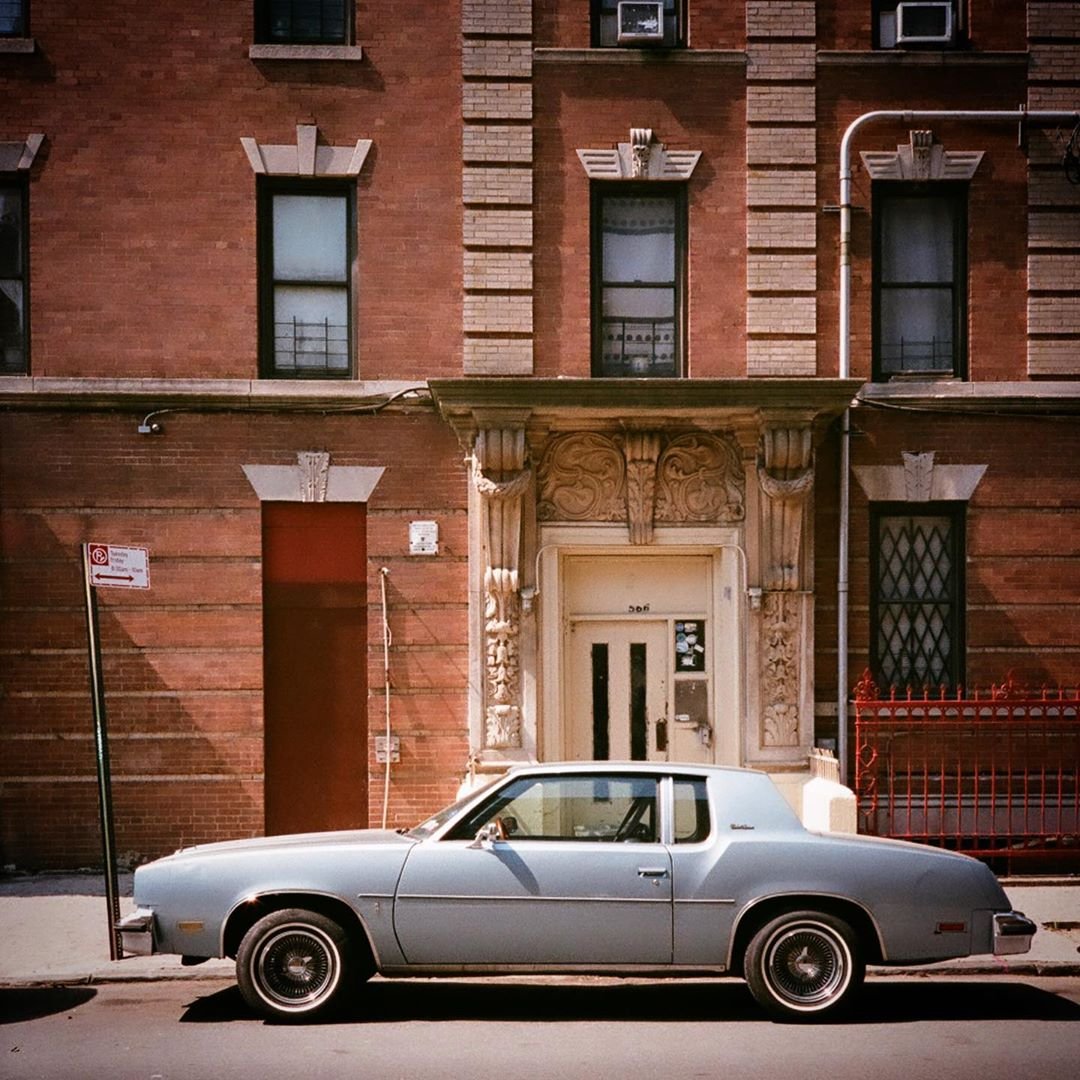 Within
two blocks Marco began commenting on similarities
to Naples. The
buildings were lower and the streets broader than
Spaccanapoli’s, and the streets had all English
names, left over from the original Anglo and Dutch
settlers of the Bronx. But when
he began seeing all the Italian names on store
signs, he had a sense of being far closer to home
than he did on Fifth Avenue.
Within
two blocks Marco began commenting on similarities
to Naples. The
buildings were lower and the streets broader than
Spaccanapoli’s, and the streets had all English
names, left over from the original Anglo and Dutch
settlers of the Bronx. But when
he began seeing all the Italian names on store
signs, he had a sense of being far closer to home
than he did on Fifth Avenue.
He was not surprised that some of the
merchants put out their refuse onto the curb,
especially since clearing away the snow had been
hampered by cars parked on both sides of the
street. He
saw no Fiats; instead, there were mostly big
American cars—Buicks, Oldsmobiles, Mercurys,
Lincolns, Cadillacs, along with smaller Japanese
models, Toyotas, Nissans, Subarus.
The first thing Nicola did was to bring him
to her family’s apartment.
“See,” she said, putting on false airs, “I live
in a duplex too!”
It was the middle of the day, so only her
mother was home, and Anna welcomed the Neapolitan
warmly in dialect—hers was much better than
Nicola’s—and apologized for not making him lunch.
“Nicola said she wanted you to see our
son’s restaurant, Alla Teresa, so I was forbidden
to cook this time.
But you come back and we’ll have a big
family dinner. You look a little skinny.”
“He’s a starving artist,” said Nicola,
holding Marco’s arm.
“Okay,” said Anna, “we’ll fatten him up.”
With that, the couple left the house and
walked over to Alla Teresa, where
Tony’s first words to Marco were, “I hear you’re
the best cook in Italy.”
Marco said, “Ah, maybe just on Capri. It’s
very, very small.”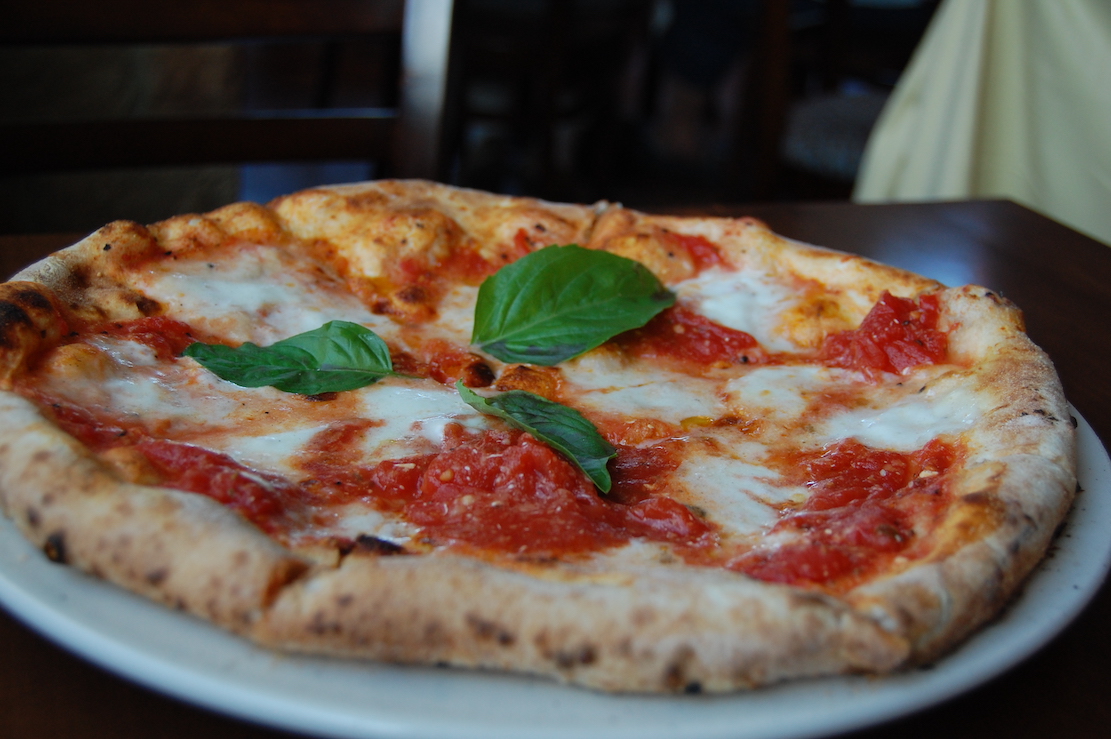
“Well, I hope you like how we cook here. It’s a
little different, Italian-American, but it’s good
food. So,
we start off with a pizza?”
Nicola was thrilled by the prospect of
showing off Alla Teresa’s pizza alla
margherita, and Tony, winking at his sister,
sat them right under the photo of her made up like
Claudia Cardinale, which Marco looked hard at.
“Nicolina, is that you?”
“That’s me. My first modeling job in
Milan.”
“You look almost as beautiful as Claudia
Cardinale as you do Nicola Santini,” he said,
framing her face with his fingers as if taking a
photo.
The pizza arrived and Marco eyed it
critically. “Hm, looks very good,” he said,
serving Nicola the first slice. “But
it’s so big!”
Nicola told him that in America everything
is big, including the pizzas. “You’re
supposed to share it.”
Marco took his first bite, then another,
shaking his head and saying, “Nicolina, c’e perfetto! The
crust is very good, a little soft in the middle
and with the burned bubbles. I love this
pizza!”
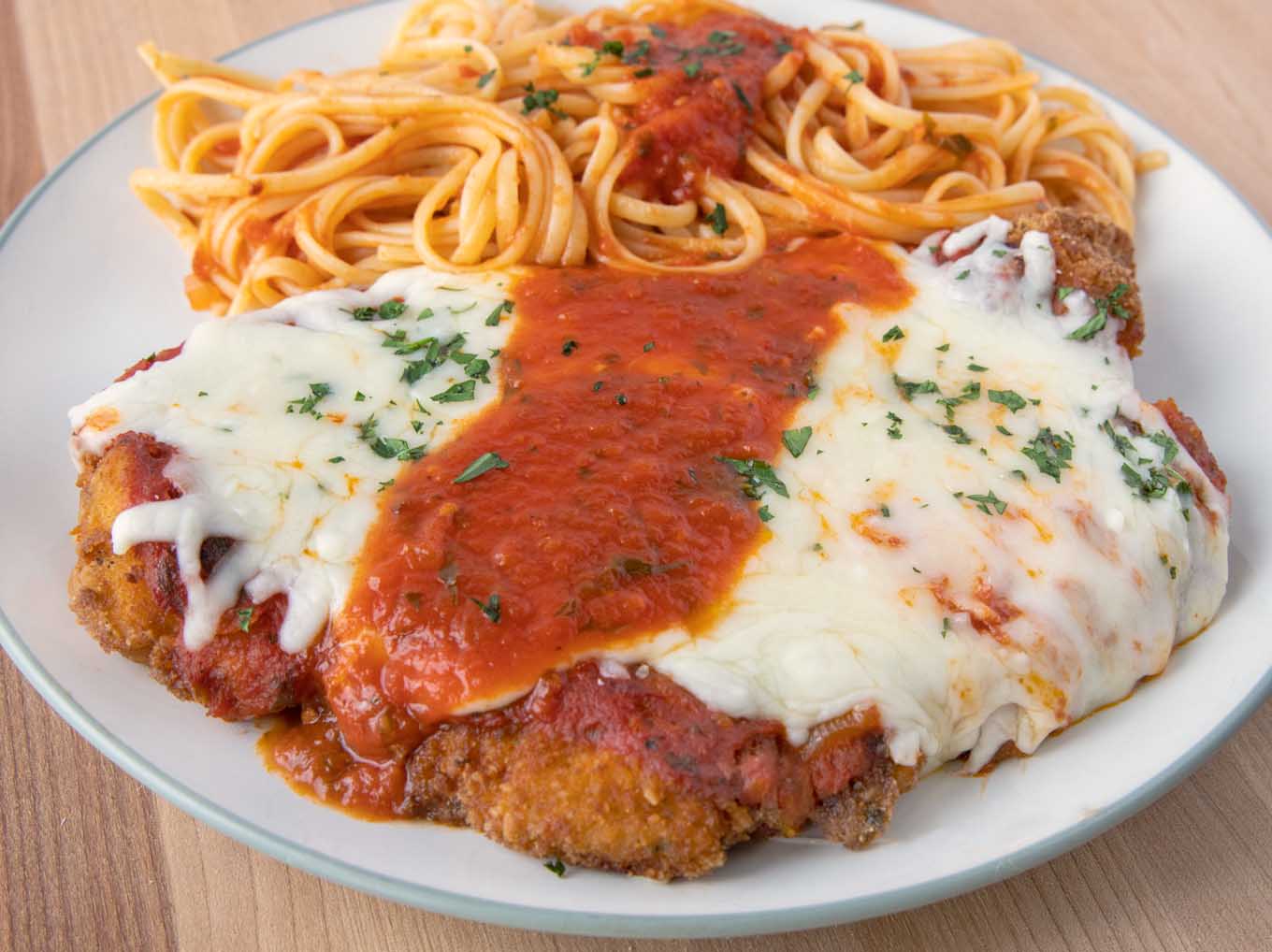 Tony
had joined the conversation. “So we make a pretty
good pizza here, Marco? Nicky
told me about the one she had in Naples.”
Tony
had joined the conversation. “So we make a pretty
good pizza here, Marco? Nicky
told me about the one she had in Naples.”
Marco began to clap his hand softly. “Tony,
I thought I would never say this—because I’ve had
some pizzas in New York in the past month—but
nothing like this. Bravissimo,
Tonino! Bravissimo!”
Tony took a little bow and said, “I hope
everything else lives up to the pizza. Lemme go
see how things are going back in the kitchen.”
While waiting, Marco looked over the menu,
reading dish after dish he’d never heard of and
looking very confused.
“Nicolina,” he said, “what are these
dishes? I’ve never heard of chicken parmigiana,
clams Posillipo, mussels Golf di Napoli, penne
alla vodka. Are
these Tony’s creations?”
Nicola explained that they were dishes that
the immigrants named when they opened restaurants
in New York.
“Most of them had never eaten at a
restaurant in, say, Naples, but they were good
cooks and so they adapted what they knew to
American ingredients and named them after their
hometowns.”
Marco was still puzzled and, when the first
dishes began to come out from the kitchen, he was
startled by the enormity of the portions. “Are
these for two people?” he asked.
Nicola laughed and said, “No, but that’s
another part of the story. The
immigrants found that food was pretty cheap here,
and since they never had enough to eat in the Old
Country, they took advantage of their good
fortune. Plus,
Americans have always been used to huge portions.”
Marco enjoyed the food—a cold octopus
salad, spaghetti with vongole
clams in their shells, and shrimp scampi. 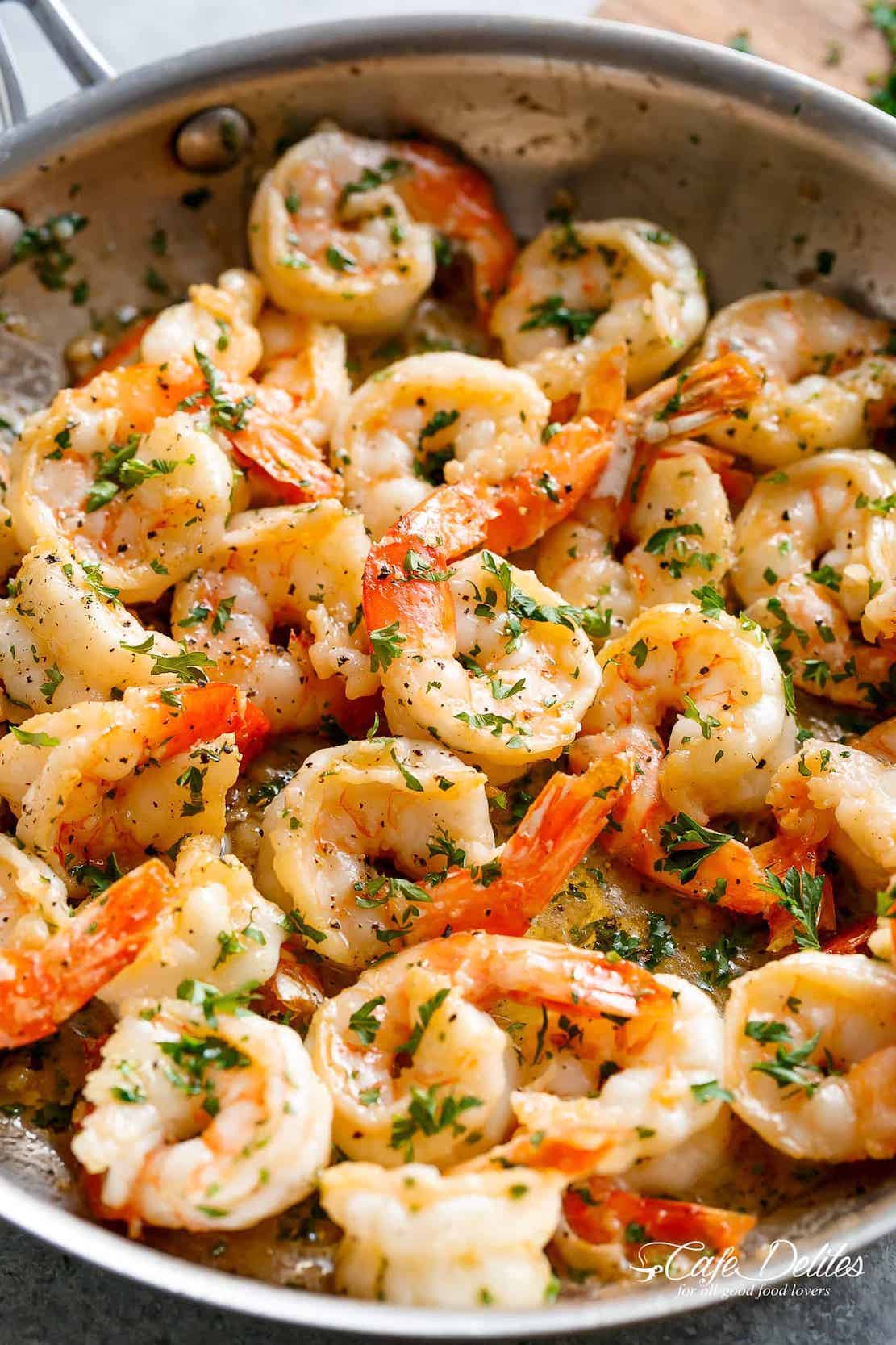 This
last caused him to comment, “But these are not scampi;
they’re shrimp.”
This
last caused him to comment, “But these are not scampi;
they’re shrimp.”
Nicola
further explained that true scampi—prawns—were
rarely available in American fish markets, so they
used jumbo shrimp.
“I know it’s a silly name, but it’s come to
mean shrimp cooked in garlic and white wine.”
Tony also served the couple a sixteen-ounce
New York strip steak with garlicky sautéed
broccoli di rape. Marco pronounced the steak to be
the best beef he’d ever tasted.
With the meal they drank a good bottle of
Vino Nobile di Montepulciano. The
couple was too full for dessert, so they just had
espresso, which came with a lemon rind. Marco
held it up and said, “Why do they give you this?”
“I don’t really know,” said Nicola. “I
heard it’s because the coffee used to be very poor
quality, so the lemon cut the bitterness. At least
that’s the story.”
Marco found this very odd but shrugged and
said, “I have a lot to learn. You
know, I’ve been to a couple of so-called ‘Northern
Italian’ restaurants in New York but they also
have all these dishes I’ve never heard of. And why
do they all serve salmon, salmon, salmon? Italians
don't eat salmon.”
Sensing Marco was frustrated by what he’d
seen and tasted, Nicola was a bit anxious asking
him what he thought of Alla Teresa’s food. “Be
honest,” she said.
Marco finished his coffee and said, “It’s
good. The ingredients are good quality and the
food tastes fresh.
The shrimp maybe not so much.”
“All the shrimp you get in restaurants in
the U.S. are frozen.”
Marco looked shocked. “Frozen? My God, c’e
terribile! Why don’t they have fresh
shrimp?”
“Because it’s easier to grow shrimp and
freeze it than to ship it from down South because
it’s so perishable.”
 “Then
they shouldn’t serve it at all,” said Marco
sternly. “Please, I hope you and Tony are not
offended. It
is just that where I come from they would shoot a
cook who used frozen seafood. But,
Nicolina, the food is good here. It just
lacks refinement, finezza. The chef
is not cooking from his heart.”
“Then
they shouldn’t serve it at all,” said Marco
sternly. “Please, I hope you and Tony are not
offended. It
is just that where I come from they would shoot a
cook who used frozen seafood. But,
Nicolina, the food is good here. It just
lacks refinement, finezza. The chef
is not cooking from his heart.”
“Believe me,” said Nicola. “I know. I’ve
tasted the way you cook and I know what you mean.
But, Marco, you cooked for, what, 40 people on
busy night? In
America, you have to cook for twice that many at
least just to make a little money.”
“Allora,
Nicolina, I won’t say anything more. I very
much enjoyed the meal. Now I
don’t eat for another three days!”
Nicola wished so much to go to bed with
Marco that evening, but it was out of the question
at her house and Marco completely understood.
“But next time I see you, you come to my
apartment and spend the night.”
Nicola
leaned in and kissed him sweetly. “I’m
sure I can arrange that without too much trouble
and without my father and brothers killing you
afterwards.”
© John
Mariani, 2020
❖❖❖
THE WINES OF TENUTA DI ARCENO
ARE
CHANGING OUTMODED VIEWS OF CHIANTI
By John Mariani
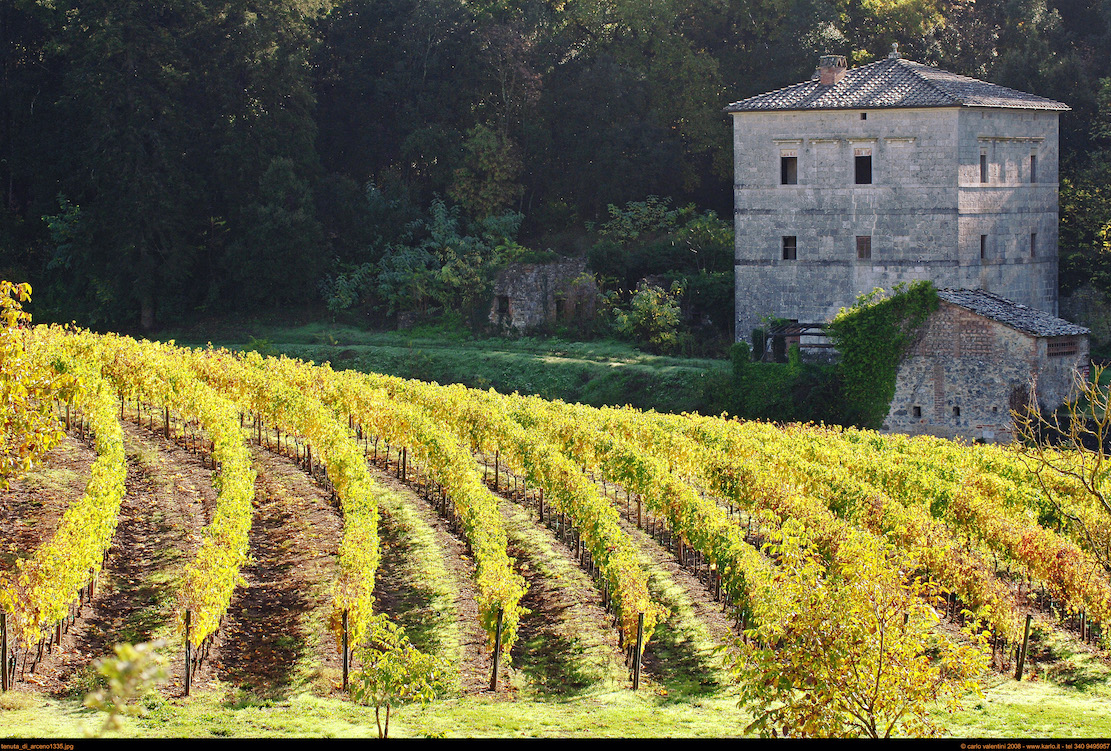
The
success
of the Chianti Classico appellation in
Tuscany has been accompanied by aggressive,
sometimes antagonistic, arguments about how
breaking long-established rules of what
grapes may go into Chianti Classico would
allow producers to make wines from 100%
Sangiovese, perhaps adding Cabernet
Sauvignon to the blend. The result was a fad
for so-called Super Tuscans—never an
official or sanctioned term—and led to the
establishment under Italian wine laws of the
I.G.T. appellation, which gave
such wines a nod as being “typical” of the
region.
Since then, producers within the larger
Chianti zone have sought to re-design its map
in order better to focus on regional terroirs,
a label term called “menzioni
aggiuntive” that recognizes the
biodiversity of the region. Leading this
movement has been Tenuta di Arceno, whose
history began with the Del
Taja family in 1504, followed by the
Piccolomini family of Siena in 1829. In
1994 Tenuta di Arceno was acquired by
American wine producers Jess Jackson and
Barbara Banke, one of the first estates the
Jackson Family purchased outside of
California.
I interviewed Arceno’s American-born
winemaker, Lawrence Cronin (left),
about the winery’s commitment to evolution in
the region.
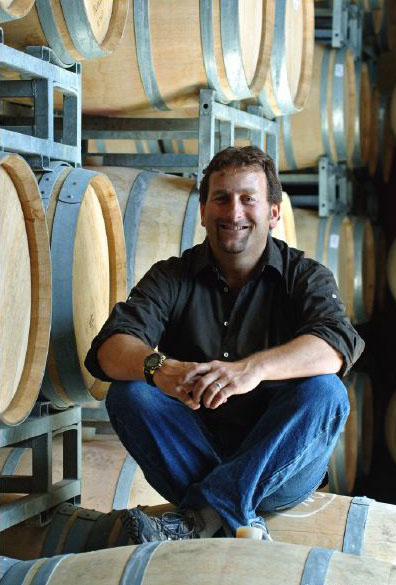 How
did you come to be the winemaker at the
estate? Did you think it was a short-term
project?
How
did you come to be the winemaker at the
estate? Did you think it was a short-term
project?
I arrived to the estate from Anderson Valley in California with just two days notice. Originally, the position was for two months to set up the lab and put things in place for the harvest. It was June, 2002, and at the time my grandmother was still living in Sicily. I grew up spending summers there, so adapting to the culture in Tuscany was not a dramatic change for me. I had previously made wine in Sicily, and had international winemaking experience from harvests in New Zealand, Australia, and Chile. As summer quickly transitioned to fall, the founding winemaker, Pierre Seillan, asked if I would stay for harvest, and you can imagine how the rest of the story unfolds. I arrived on a Wednesday and never left!
What did
you find needed to be done at the winery to
improve the viniculture?
When I
arrived at Tenuta di Arceno in 2002, I had the
opportunity to work under Seillan. With
his decades of experience, Pierre conducted
detailed studies of the soil, topography and
climate to gain a complete understanding of
the land. He mapped elevation changes and
differentiation points between the estate’s
ten mesoclimates and diversity of soils. It
was according to these data points that Pierre
established new vineyard plantings and
implemented a micro-cru approach to
winemaking—parceling the estate into more than
60 single blocks with the intent to farm each
individually. In Tuscany in the early 2000s,
this approach was still very avant-garde for
the region. So, while much
of the legwork had been completed by the time
I arrived, it is also where the story begins.
We harvested the first fruit off the vines in
2002, and the approach has remained consistent
through the years in our focus on the
vineyards. In terms of the steps to improve,
this has been a process over the last two
decades of gaining a better understanding and
intimate knowledge of each block – then
listening, observing and farming according to
the nuances and personality of each.
The knowledge we bring to the wines today has
been accumulated over the last two decades of
hands-on work in the vineyards. Alongside the
vineyard manager, Michele Pezzicoli, who has
been with the winery since 1995, we have
tended the vines together for nearly 20 years
and use this experience as we approach each
new vintage.
How would
you describe the terroir vis-à-vis other
Chianti estates and California?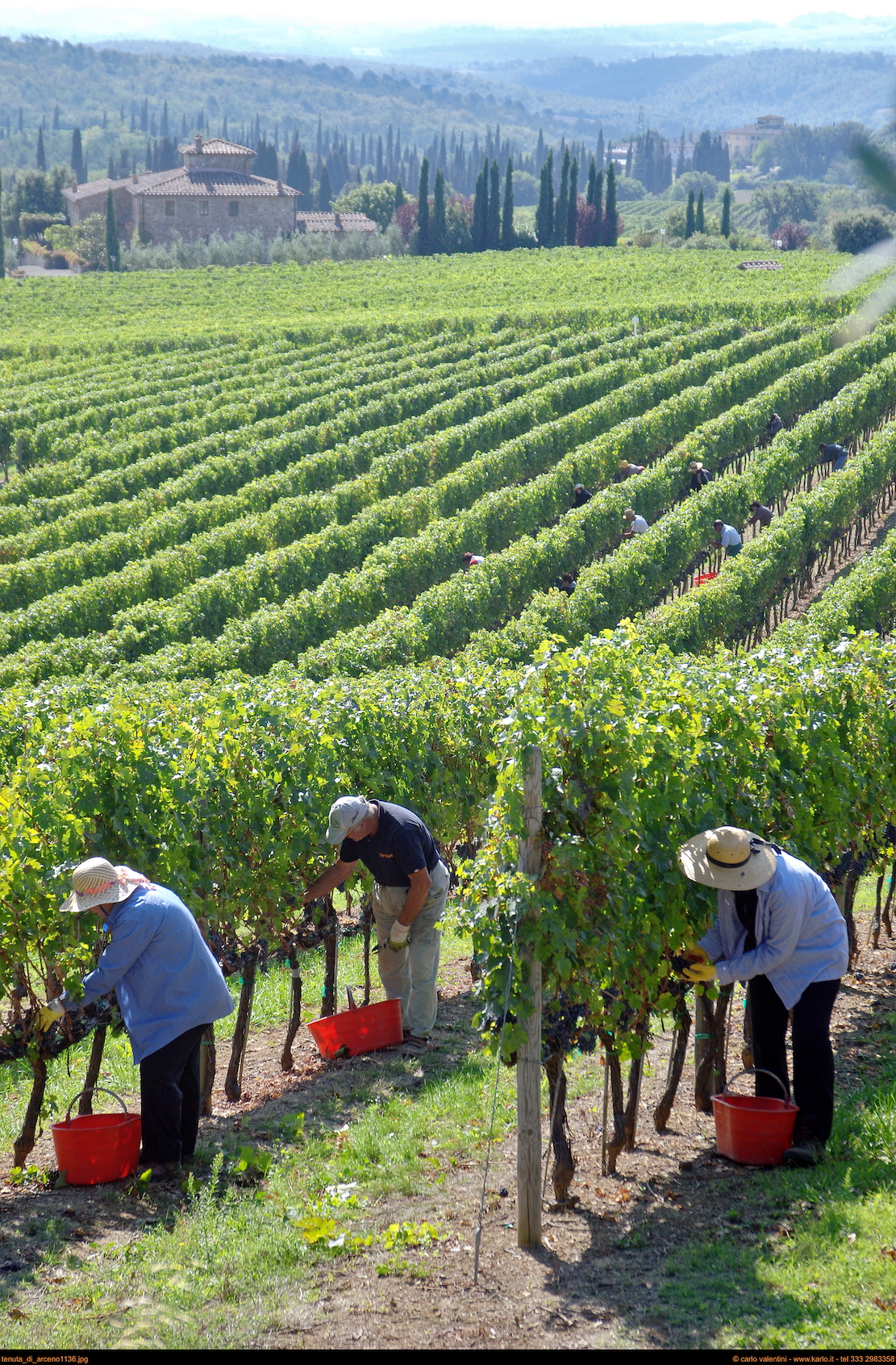
The estate is located in Castelnuovo
Berardenga, which is the southernmost commune
of Chianti Classico. It has a continental
climate and is comparatively warmer than other
regions within Chianti Classico, with cooler
temperatures as the hillsides rise in
elevation.
The estate comprises 1,000 total hectares
(2,500 acres) within the region, and only 10%
of the land is planted to vine (220 acres).
The expanse of the estate allowed us to be
selective in the planting process and to
choose the most optimal sites for the
vineyards. The estate has ten distinct
mesoclimates and is home to a diversity of
soils—from clay, galestro, sandstone and
basalt—with elevation ranges from 350 to 600
meters. This variability in elevation, soils
and temperatures, allows us to time the
picking dates for each block and variety as
they reach optimal ripeness. In this sense,
the diversity of our terroir is an important
contributing factor that allows us to produce
the best possible wines.
Of Chianti Classico’s nine communes, the wines
of Castelnuovo Berardenga are stylistically
distinct and often considered riper and
rounder as compared to their counterparts to
the north. A common reference locally is that
the Chianti Classico wines from Castelnuovo
Berardenga are “brunelleggianti,” a reference
to their resemblance to the great Sangiovese
wines of Brunello, or “brunelleggiare,”
in how they behave and act like Brunello
wines.
How
have the wines evolved over your time with
the winery?
Tenuta di Arceno was established with a
long-term vision to make wines that rivaled
the best in the world, and this evolution has
been 20 years in the process. When we embarked
on this journey for Tenuta di Arceno, we were
fortunate to have the resources to set
ourselves up for success in our micro-cru
approach.
Though the winemaking approach has
largely remained consistent over time, we have
changed in the process. It takes years of
trial and error to understand the details of
each block. Like people, each block has its
own personality and needs in the vineyard and
winery. By farming each block individually,
we’ve been able learn these nuances of the
terroir in extreme detail.
Our Sangiovese wines have evolved to showcase
three distinct expressions of the variety—from
Chianti Classico Annata, Riserva, and now 100%
varietal Strada al Sasso Gran Selezione. Each
preserves the bright red fruit and playful
energy of Sangiovese, while also revealing its
layers of complexity.
With our three Toscana IGT wines, the intent
has been to showcase the world-class potential
of these varieties in Tuscany, particularly
the high caliber of Cabernet Franc and Merlot.
With our flagship Arcanum and Valadorna wines,
the evolution has been a gradual progression
to 100% varietal expressions, while continuing
to refine the process that yields their
longevity in the cellar.
How do you
envision the winery and wines evolving in
the next 10 years?
One of the most exciting developments will be
the release of Arcanum 2016 and Valadorna
2018—marking the move for both wines to 100%
varietal Cabernet Franc and Merlot,
respectively. This has been a long-term vision
for the wines, and we are excited to arrive at
this moment of sharing them with the market.
We are constantly experimenting with new
sites, varieties and single vineyard
expressions. We’re hoping to plant our first
white variety at higher elevation in the
hillsides of Castelnuovo Berardenga next year,
and exploring new single vineyard expressions
from the seven “grands crus” sites on the
estate.
Finally, sustainable farming continues to be a
focus going forward. We have employed
sustainable practices at the estate since
1994, and it is increasingly important for the
long-term preservation of the land to
prioritize soil health and vitality, and we
believe it yields positive benefits in the
resulting wines.
How
has COVID-19 impacted work in the vineyards?
Nature
remains
indifferent to a global pandemic, but the
constant progression of a vine’s lifecycle was
a source of comfort and consistency. Though we
closed our tasting room, vineyard work
continued with appropriate safeguards and
precautionary measures in place under
legislation, and we feel fortunate that our
team has remained safe and in good health.
How
has it impacted sales and export?
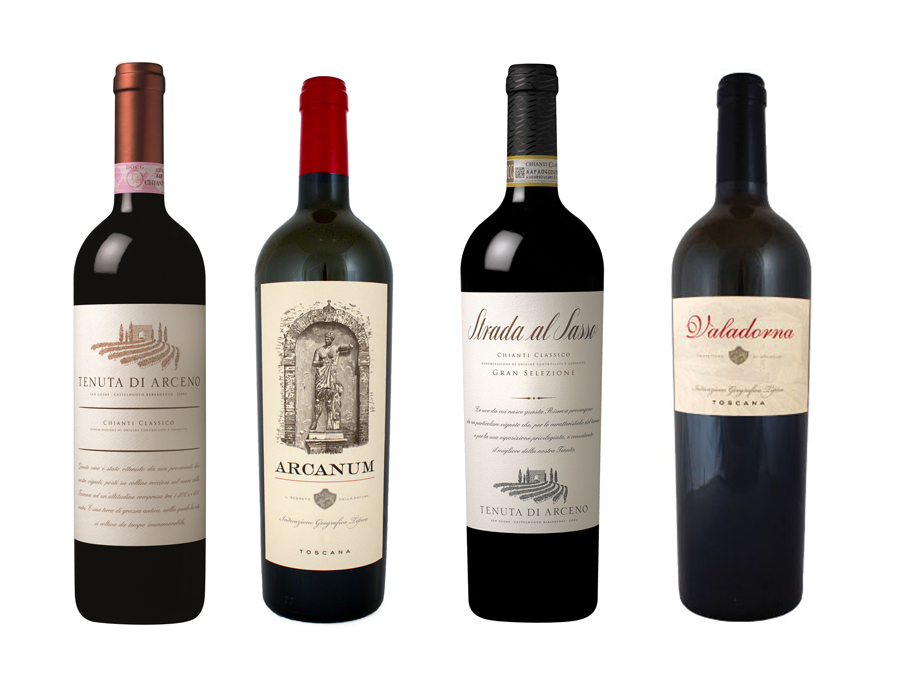
Italy was one of the first countries to lock
down in the early part of 2020, but
fortunately we continued to maintain sales and
fulfill orders while also growing exports.
Although we miss seeing our tasting room
guests and buyers in-person, virtual channels
have allowed us to keep in touch with our
customers and created a new avenue for
engagement. As part of the Jackson Family
Wines portfolio, we have access to a broad
North American and global distribution
network, which has been an incredible asset
during the pandemic. The United States and
Canada continue to be our primary export
markets, supported by Australia, Switzerland,
the Netherlands and the United Kingdom.
The
rise in alcohol levels in red wines around
the world is nothing short of
astonishing, with 14.5% becoming a norm. How
much of this is due to global warming
and how much to winemakers
who deliberately seek to boost their
wines to higher levels?
The threat of climate
change and its impact to the wine industry is
experienced at a global level. Certainly,
there are winemakers who pursue a style, and
as part of that may seek higher alcohol
levels. But across the region, warmer weather
has moved harvest dates earlier and yielded
incremental increases in ripeness and alcohol
levels.
Fortunately, Sangiovese is a late ripening
variety and so the negative effects of climate
change are delayed. At this stage, it’s hard
to know if we’ll ever return to the days of
12.5-13% Sangiovese. In the years ahead, it is
likely for the wines to remain around 14% and
possibly to approach 15% in very hot years. In
the short-term, riper Sangiovese has not been
a negative thing for Chianti Classico, and the
last several years have produced some of the
region’s most exceptional wines. With other
varieties, we can adapt by ensuring the
correct varieties are planted in optimal
soils, and through meticulous canopy
management to create shade for grapes like
Merlot that are more sensitive to heat.
But the impacts of climate change in Chianti
Classico are not only in relation to ripeness
and shortened hang time. Like many global wine
regions around the world, Chianti Classico has
struggled with unpredictable weather patterns
and severe drought and these factors impact
yields, fruit set, ripening, and risk of rot
and disease.
What
is your feeling about wines at 14.5% and
above?
My
feeling
about wine at any percentage of alcohol is
that it must be in balance. There are many
wines above 14.5% that show a low perception
of alcohol, and equally wines below 14% that
lack balance and integration. In my opinion,
quality wines aim for harmony between the
fruit, acid, alcohol and tannin, and pursue a
sense of balance as guided by variety and
place. Throughout many years of tasting, I’ve
enjoyed wines across the spectrum of alcohol
levels, and have been so often surprised or
mistaken in my assumptions—that is one of the
great pleasures of wine—that I’ve learned to
avoid broad generalizations.
As the
non-Classico Chiantis are now better made
and becoming better known, what today are
the distinctions?
Chianti Classico is in the heart of the
Chianti region and considered the historical
birthplace for quality wine from Tuscany. The
region was one of the first delineated wine
appellations in the world and set a global
standard for quality wine production. For
many people, the Gallo Nero still symbolizes
this commitment to quality and excellence in
the glass—not to mention more than 300 years
of tradition!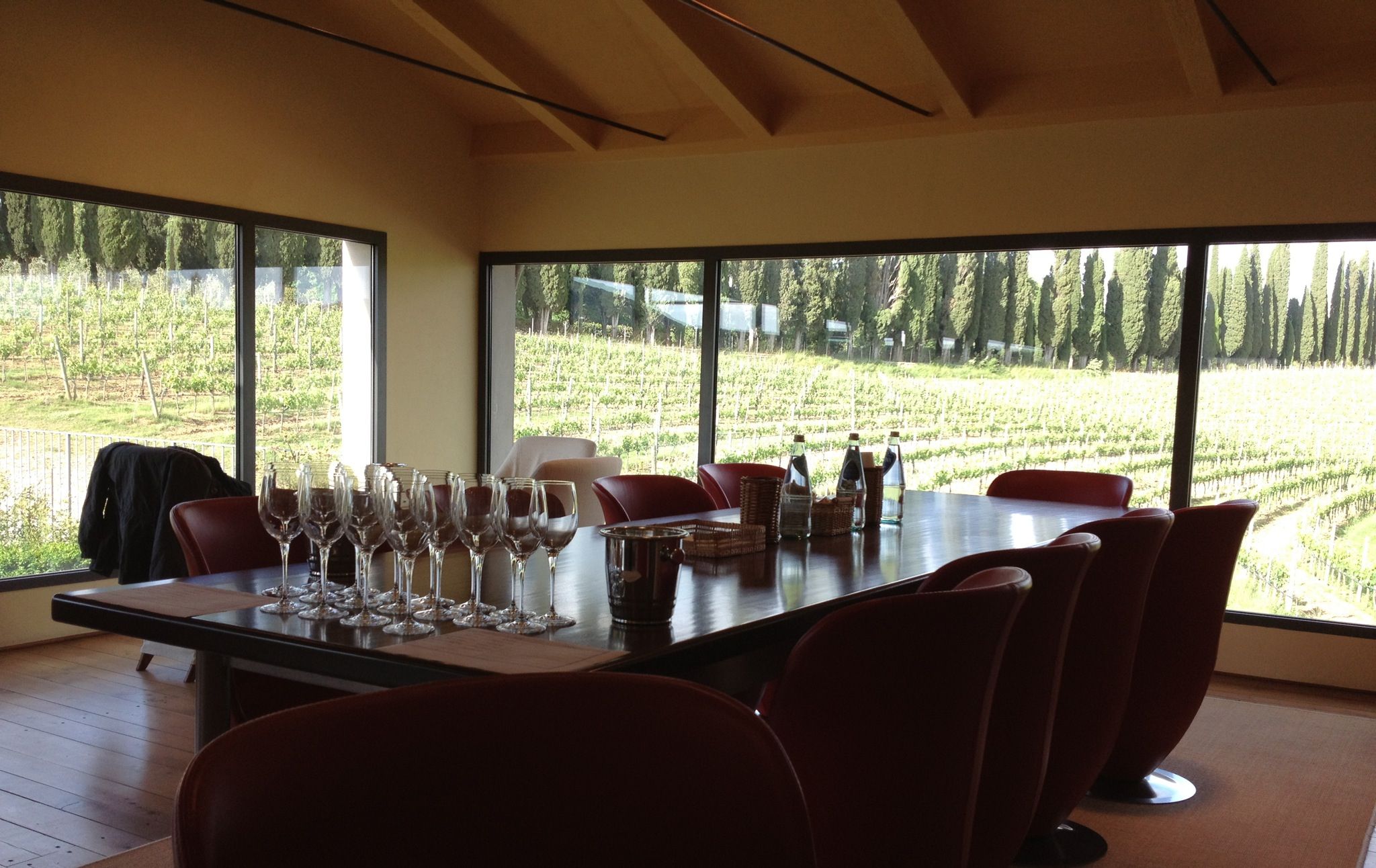
There are general distinctions as it relates
to production differences for Chianti DOCG and
Chianti Classico DOCG. For example, Chianti
DOCG has a lower minimum requirement for
Sangiovese (70% compared to 80% in Chianti
Classico), permits the use of white varieties,
and allows for higher yields as compared to
Chianti Classico.
Stylistically, the wines from Chianti
Classico are marked by their acidity and often
come from vineyards planted at higher
elevation, as is the case for the wines from
Tenuta di Arceno. While Chianti can come from
across the region (excluding Chianti
Classico), the wines for Chianti Classico
remain committed to a precise geographical
zone rooted in the historic heart of the
region.
For the most, Chianti wines are still intended
for early consumption, but the debut of the
Gran Selezione category has allowed producers
from Chianti Classico to showcase complex and
age-worthy expressions of 100% varietal
Sangiovese. Like the Strada al Sasso Gran
Selezione, many of these wines are also single
vineyard expressions.
How
has the label IGT affected Tuscany?
Though global recognition for the Super Tuscan
category did not arrive until the mid-2000s,
Tuscan producers have been experimenting with
international varieties since the 1940s. The
category was created with a sense of freedom
and determination to pursue the best quality
possible—without restriction or limitation.
The producers who continue
to pursue Toscana IGT are dedicated to quality
and believe that non-traditional varieties can
produce not only worthy, but world-class
expressions of the Tuscan terroir. Today, many
of the most valuable and sought-after wines
from Tuscany, and possibly the world, are
comprised of Cabernet Franc and Merlot—wines
like Sassicaia, Le Macchiole, and Masseto.
For Tenuta di Arceno, the vision for Cabernet
Franc and Merlot began in 1994 with a detailed
understanding of the estate and the potential
for these varieties. Our progression over the
last 20 years has been about refining the
process, and culminates with the move to 100%
varietal for two of our flagship
bottlings—Arcanum (100% Cabernet Franc with
2016 vintage) and Valadorna (100% Merlot with
2018 vintage).
The recognition of the Super Tuscan category
allowed Tuscany to compete on a global stage.
But understanding the category today, and its
evolution, means recognizing its diversity.
The category allows us to express the full
capacity of the land and expand the
biodiversity of both native and non-native
varieties. And yet, within this range of
expressions, the best wines remain true to an
identity and personality that is undeniably
Tuscan.
Like most things, the Super Tuscan, or Toscana
IGT, category moved too far in one direction,
only to come back again. The category was
flooded by wines capitalizing on a trend and
favoring “style” over quality, varietal
expression, and sense of place.
Understandably, it sparked a reinvigoration
and recommitment to the region’s history,
traditions and native varieties.
But the story for Tenuta di Arceno—and I
believe for Tuscany—is not of one or the
other. Since our first days, Tenuta di Arceno
has been dedicated equally to the production
of Chianti Classico DOCG and Toscana IGT
wines, and embraced both Sangiovese and
international varieties. For
us, it is a duality that is not mutually
exclusive. It is an honest reflection of the
region, its diversity and evolution, grounded
in a relentless pursuit to make the best
possible wines from our corner of Castelnuovo
Berardenga.
❖❖❖
“Potatoes
Will
Make Their Triumphant Return to Taco Bell’s
Menu” By Rachel Sugar, New York Magazine
(1/14/21).
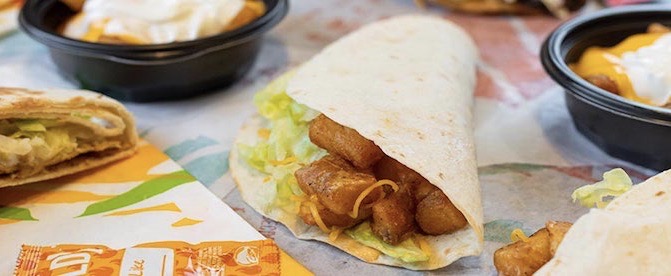
Sponsored by

Any of John Mariani's books below may be ordered from amazon.com.
 The Hound in Heaven
(21st Century Lion Books) is a novella, and
for anyone who loves dogs, Christmas, romance,
inspiration, even the supernatural, I hope you'll find
this to be a treasured favorite. The story
concerns how, after a New England teacher, his wife and
their two daughters adopt a stray puppy found in their
barn in northern Maine, their lives seem full of promise.
But when tragedy strikes, their wonderful dog Lazarus and
the spirit of Christmas are the only things that may bring
his master back from the edge of despair.
The Hound in Heaven
(21st Century Lion Books) is a novella, and
for anyone who loves dogs, Christmas, romance,
inspiration, even the supernatural, I hope you'll find
this to be a treasured favorite. The story
concerns how, after a New England teacher, his wife and
their two daughters adopt a stray puppy found in their
barn in northern Maine, their lives seem full of promise.
But when tragedy strikes, their wonderful dog Lazarus and
the spirit of Christmas are the only things that may bring
his master back from the edge of despair. WATCH THE VIDEO!
“What a huge surprise turn this story took! I was completely stunned! I truly enjoyed this book and its message.” – Actress Ali MacGraw
“He had me at Page One. The amount of heart, human insight, soul searching, and deft literary strength that John Mariani pours into this airtight novella is vertigo-inducing. Perhaps ‘wow’ would be the best comment.” – James Dalessandro, author of Bohemian Heart and 1906.
“John Mariani’s Hound in Heaven starts with a well-painted portrayal of an American family, along with the requisite dog. A surprise event flips the action of the novel and captures us for a voyage leading to a hopeful and heart-warming message. A page turning, one sitting read, it’s the perfect antidote for the winter and promotion of holiday celebration.” – Ann Pearlman, author of The Christmas Cookie Club and A Gift for my Sister.
“John Mariani’s concise, achingly beautiful novella pulls a literary rabbit out of a hat – a mash-up of the cosmic and the intimate, the tragic and the heart-warming – a Christmas tale for all ages, and all faiths. Read it to your children, read it to yourself… but read it. Early and often. Highly recommended.” – Jay Bonansinga, New York Times bestselling author of Pinkerton’s War, The Sinking of The Eastland, and The Walking Dead: The Road To Woodbury.
“Amazing things happen when you open your heart to an animal. The Hound in Heaven delivers a powerful story of healing that is forged in the spiritual relationship between a man and his best friend. The book brings a message of hope that can enrich our images of family, love, and loss.” – Dr. Barbara Royal, author of The Royal Treatment.
 |
The Encyclopedia of American Food and Drink by John F. Mariani (Bloomsbury USA, $35) Modesty forbids me to praise my own new book, but let me proudly say that it is an extensive revision of the 4th edition that appeared more than a decade ago, before locavores, molecular cuisine, modernist cuisine, the Food Network and so much more, now included. Word origins have been completely updated, as have per capita consumption and production stats. Most important, for the first time since publication in the 1980s, the book includes more than 100 biographies of Americans who have changed the way we cook, eat and drink -- from Fannie Farmer and Julia Child to Robert Mondavi and Thomas Keller. "This book is amazing! It has entries for everything from `abalone' to `zwieback,' plus more than 500 recipes for classic American dishes and drinks."--Devra First, The Boston Globe. "Much needed in any kitchen library."--Bon Appetit. |
"Eating Italian will never be the same after reading John Mariani's entertaining and savory gastronomical history of the cuisine of Italy and how it won over appetites worldwide. . . . This book is such a tasteful narrative that it will literally make you hungry for Italian food and arouse your appetite for gastronomical history."--Don Oldenburg, USA Today. "Italian
restaurants--some good, some glitzy--far
outnumber their French rivals. Many of
these establishments are zestfully described
in How Italian Food Conquered the World, an
entertaining and fact-filled chronicle by
food-and-wine correspondent John F.
Mariani."--Aram Bakshian Jr., Wall Street
Journal.
"Equal parts
history, sociology, gastronomy, and just
plain fun, How Italian Food Conquered the
World tells the captivating and delicious
story of the (let's face it) everybody's
favorite cuisine with clarity, verve and
more than one surprise."--Colman Andrews,
editorial director of The Daily
Meal.com. "A fantastic and fascinating
read, covering everything from the influence
of Venice's spice trade to the impact of
Italian immigrants in America and the
evolution of alta cucina. This book will
serve as a terrific resource to anyone
interested in the real story of Italian
food."--Mary Ann Esposito, host of PBS-TV's
Ciao
Italia. "John Mariani has written the
definitive history of how Italians won their
way into our hearts, minds, and
stomachs. It's a story of pleasure over
pomp and taste over technique."--Danny Meyer,
owner of NYC restaurants Union Square
Cafe, The Modern, and Maialino.
|
 |
 |
 |
 |
 |
 |
 |
 |
 Everett Potter's Travel Report:
Everett Potter's Travel Report: 
 Eating Las Vegas
JOHN CURTAS has been covering the Las Vegas
food and restaurant scene since 1995. He is
the co-author of EATING LAS VEGAS – The 50
Essential Restaurants (as well as
the author of the Eating Las Vegas web site: www.eatinglasvegas.
He can also be seen every Friday morning as
the “resident foodie” for Wake Up With the
Wagners on KSNV TV (NBC) Channel 3 in
Las Vegas.
Eating Las Vegas
JOHN CURTAS has been covering the Las Vegas
food and restaurant scene since 1995. He is
the co-author of EATING LAS VEGAS – The 50
Essential Restaurants (as well as
the author of the Eating Las Vegas web site: www.eatinglasvegas.
He can also be seen every Friday morning as
the “resident foodie” for Wake Up With the
Wagners on KSNV TV (NBC) Channel 3 in
Las Vegas.
MARIANI'S VIRTUAL GOURMET
NEWSLETTER is published weekly. Publisher: John Mariani. Editor: Walter Bagley. Contributing Writers: Christopher Mariani,
Robert Mariani, Misha Mariani, John A. Curtas, Gerry Dawes, Geoff Kalish,
and Brian Freedman. Contributing
Photographer: Galina Dargery. Technical
Advisor: Gerry
McLoughlin.
If you wish to subscribe to this
newsletter, please click here: http://www.johnmariani.com/subscribe/index.html
© copyright John Mariani 2021
